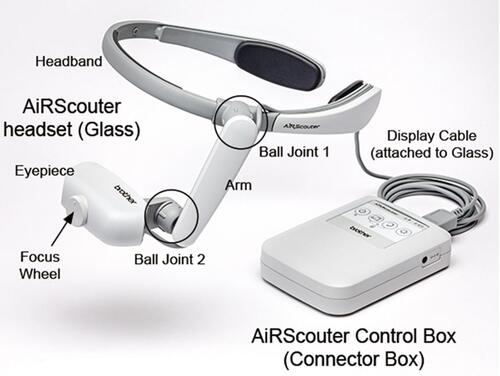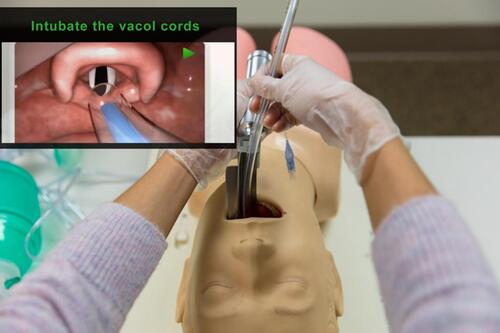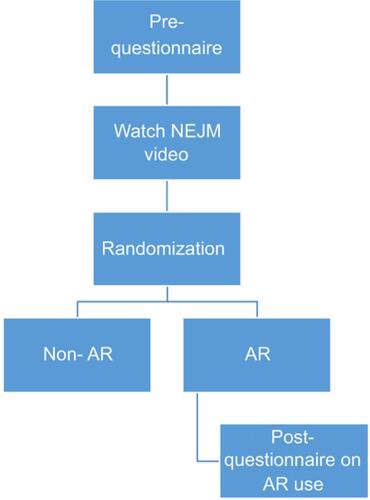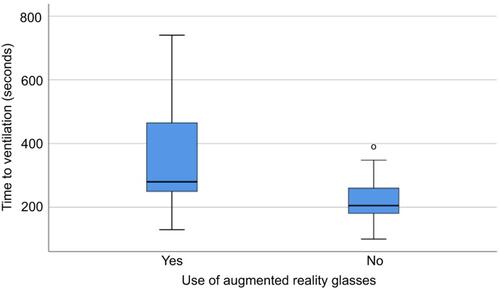Figures & data
Figure 1 AiRScouter WD-200B by Brothers (http://www.brother-usa.com/airscouter/). Not seen in the photo is the strap that connects to either of the headbands in the back. Label on this figure was added by the authors.Citation17

Figure 2 Simulated view that the participant sees with AR glasses. The image area is approximated and can be adjusted by the viewer as needed. Participants are able to follow video image instructions to properly complete the procedure.

Figure 3 Picture showing how the AR glasses were used in the intubation procedure in terms of their position.

Table 1 17-point intubation checklist developed by the research team from the NEJM video
Table 2 Frequency (%) of baseline characteristics of participants by study group (N=32)
Table 3 Median (min, max) of the baseline perceptiona of AR by study group
Table 4 Frequency (%) of post-AR perception from the AR group participants, N=13*


